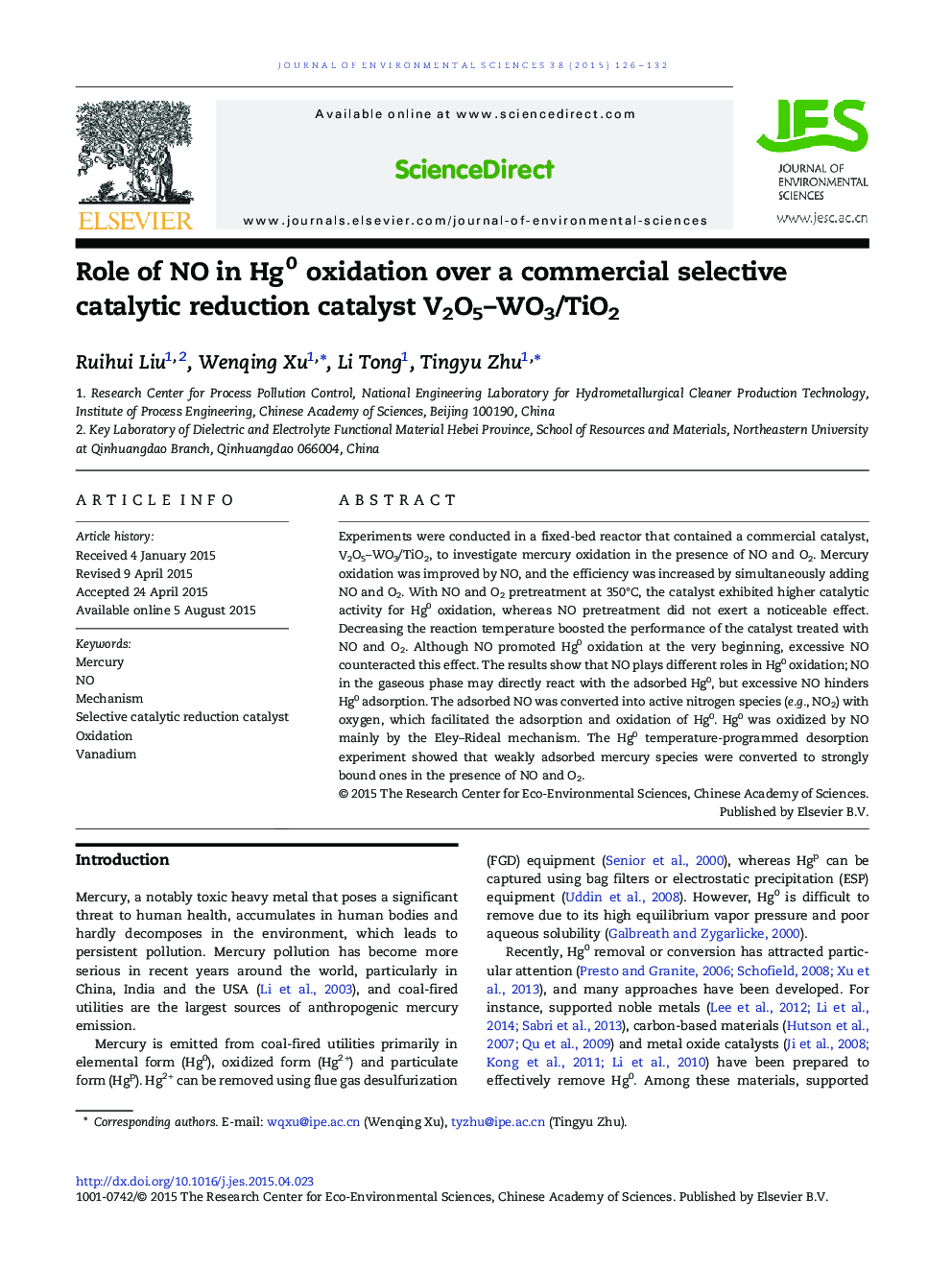| Article ID | Journal | Published Year | Pages | File Type |
|---|---|---|---|---|
| 4453856 | Journal of Environmental Sciences | 2015 | 7 Pages |
Experiments were conducted in a fixed-bed reactor that contained a commercial catalyst, V2O5–WO3/TiO2, to investigate mercury oxidation in the presence of NO and O2. Mercury oxidation was improved by NO, and the efficiency was increased by simultaneously adding NO and O2. With NO and O2 pretreatment at 350°C, the catalyst exhibited higher catalytic activity for Hg0 oxidation, whereas NO pretreatment did not exert a noticeable effect. Decreasing the reaction temperature boosted the performance of the catalyst treated with NO and O2. Although NO promoted Hg0 oxidation at the very beginning, excessive NO counteracted this effect. The results show that NO plays different roles in Hg0 oxidation; NO in the gaseous phase may directly react with the adsorbed Hg0, but excessive NO hinders Hg0 adsorption. The adsorbed NO was converted into active nitrogen species (e.g., NO2) with oxygen, which facilitated the adsorption and oxidation of Hg0. Hg0 was oxidized by NO mainly by the Eley–Rideal mechanism. The Hg0 temperature-programmed desorption experiment showed that weakly adsorbed mercury species were converted to strongly bound ones in the presence of NO and O2.
Graphical abstractNO plays different roles in Hg0 oxidation: NO in the gaseous phase can directly react with adsorbed Hg0, however, excessive adsorbed NO hinders Hg0 adsorption and weakens the promotional effect. In addition, the adsorbed NO converts to active nitrogen species (such as NO2), which facilitates the adsorption of Hg0 and improves mercury oxidation.Figure optionsDownload full-size imageDownload as PowerPoint slide
